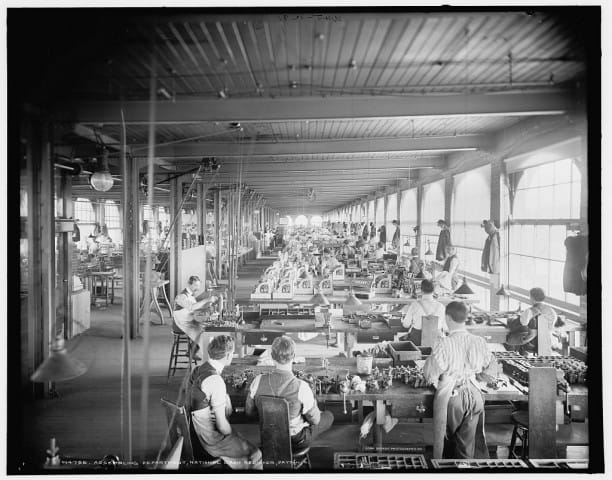Dayton has a long tradition of innovation (think airplanes, pull-tabs, electric starters, cash registers, and even teacher unions). Yet, as the innovations of one era slip into obsolescence in the next, it should come as no surprise that the Gem City has struggled economically in recent decades. The hope for Dayton’s revival comes from innovation. And this time the innovation is in education—how we prepare people for the jobs of today and tomorrow.
By 2018, it is estimated that almost two-thirds of jobs in America will require at least a sub-baccalaureate credential. A sub-baccalaureate credential is a post-secondary credential that includes awards like certificates, associate degrees, state-issued education credentials, corporate certificates and badges among others. Dayton, according to a fantastic piece in the Lumina Foundation’s fall edition of Focus Magazine, is quickly becoming a national leader in preparing “sub-baccalaureate graduates.”
Dayton’s economic struggles peaked in 2009 and the scale of the pain was captured by The New York Times, which reported that the area faced a vortex of “economic and social change.” The Times continued, reporting that “the area’s job total has fallen 12 percent since 2000, while about half of its factory jobs – 38,000 out of 79,000 – have disappeared this decade. Not only have large G.M. and Delphi plants closed, but NCR, long the city’s corporate jewel, recently announced that it would move its headquarters to the Atlanta area.”
The jobs of Dayton's past: The National Cash Register assembly line

Source: http://historicalphotosblog.com/category/states/ohio/
In a true Midwestern can-do spirit, a coalition of business leaders, higher education institutions, non-profits, K-12 institutions, local governments and Wright Patterson Air Force Base (the Dayton area’s largest employer) have mobilized to help the area’s citizens transition to the jobs and opportunities of the twenty-first century. Until recently, jobs and education opportunities in Dayton – and many other cities in the Midwest –were bifurcated. A small percentage of Ohio students would go to 4-year colleges and beyond (often leaving the state); while most area high school graduates would move onto a well-paying factory job or an ancillary service sector job.
But, the world has changed. Lumina reports, “The widely held, almost reflexive definition of college – four-year, on campus, residential experience leading to a bachelor’s degree – is no longer sufficient. It’s not broad enough, not flexible enough, just not good enough to work for millions of people, or for the nation as a whole.”
According to Tom Lasley, former Dean of Education at the University of Dayton and now head of Dayton’s Learn to Earn program (the umbrella organization coordinating the effort to move education towards meeting the economic realities buffeting Dayton’s citizens), “new pathways are a necessary alternative to the all-or-nothing thinking that has persistently defined postsecondary success as bachelor’s attainment.”
The anchor organization leading the movement towards a more targeted and work-based education in Dayton is Sinclair Community College. Sinclair enrolls more than 22,000 students and is the state’s largest community college. More than half of all adults in the Dayton area have enrolled at Sinclair at some point in their lives. Sinclair’s president Steven Johnson argues that “Society has been calling for modularization education for a couple of decades…That’s what certificates are.”
As reported by Lumina, Sinclair awarded about 4,300 degrees and certificates in 2011-12, and it offers 172 different degree and certificate programs. Sinclair adjusts its offerings to the needs of the local economy, so its students can find meaningful work, raise families and pay taxes. Just this week Sinclair, and two partner colleges, were awarded a $12 million grant from the U.S. Department of Labor to “create a revolutionary change in how information technology training is conducted.”
The jobs of Dayton's future: The floor of a computerized advanced manufacturing plant
Source: Sinclair Community College
The president and chief executive officer of the Dayton Area Chamber of Commerce , Phil Parker, shared with Lumina how businesses see education. “To business leaders, education is a means to an end,” Parker explains. “It provides a capable, qualified workforce. Ultimately, it’s about people getting a job, being successful and having a great quality of life they can share with their family…That’s a different mindset from education being the end product.”
Dayton has been knocked down, but it is certainly not out. It is a community undergoing a revitalization. This is a revitalization driven by a reconceptualization of what it means to be educated. Dayton’s efforts are worthy of the Lumina Foundation’s attention, and efforts here are something the rest of the country should be paying attention to as well.

